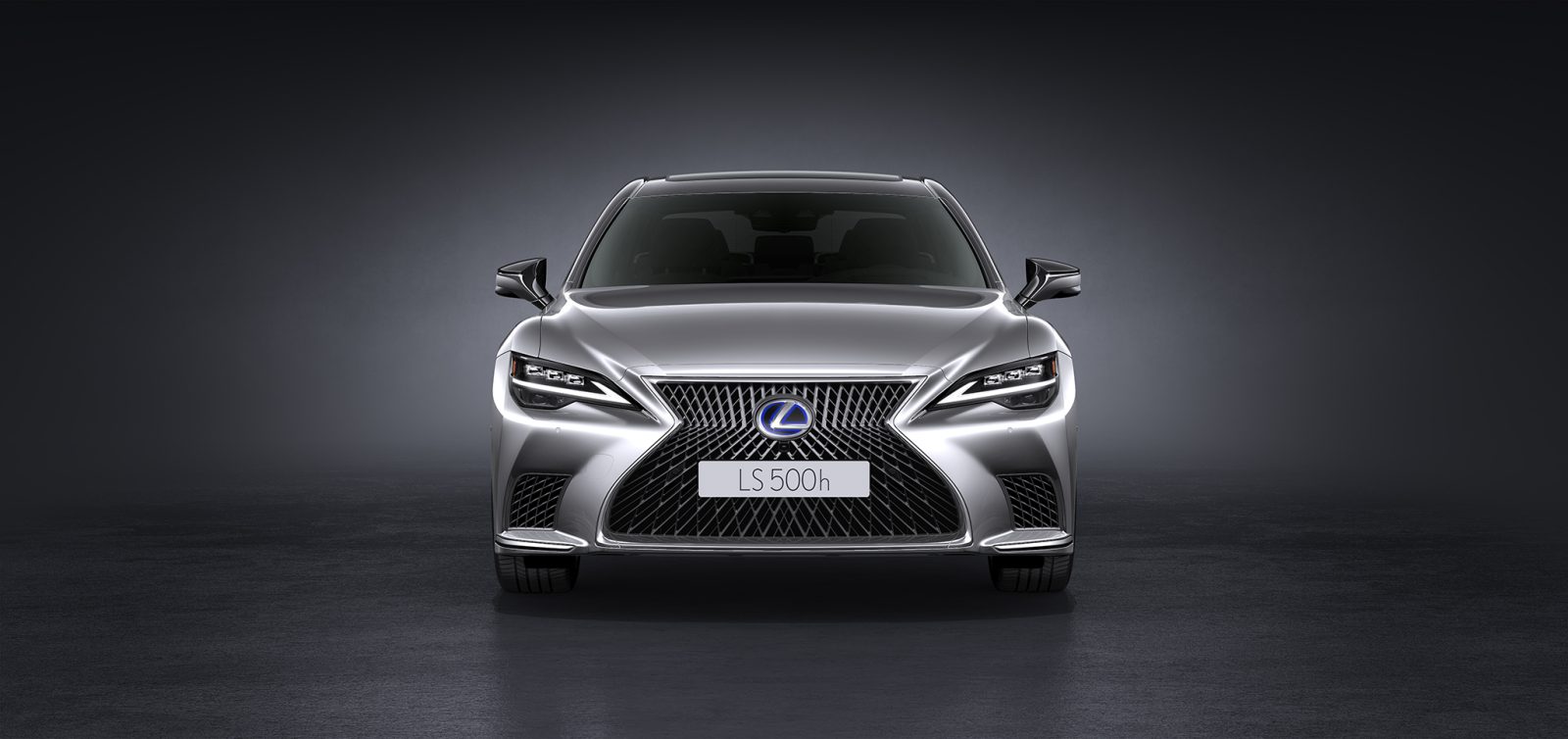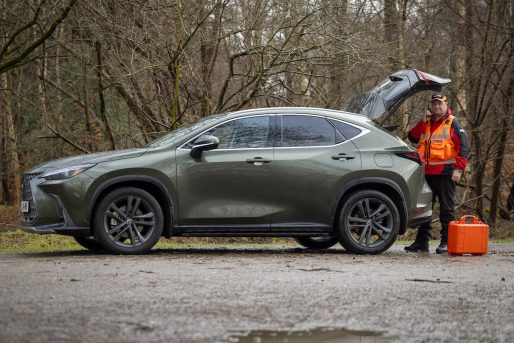As our long-established flagship saloon, the Lexus LS has a distinguished history of pushing the boundaries of design, bringing together modern technology with time-honoured Japanese crafts and aesthetics. These qualities figure strongly in the new 2021 Lexus LS, which benefits from new treatments and design elements that embrace a fusion of art, craftsmanship and functionality that Lexus has made its own.
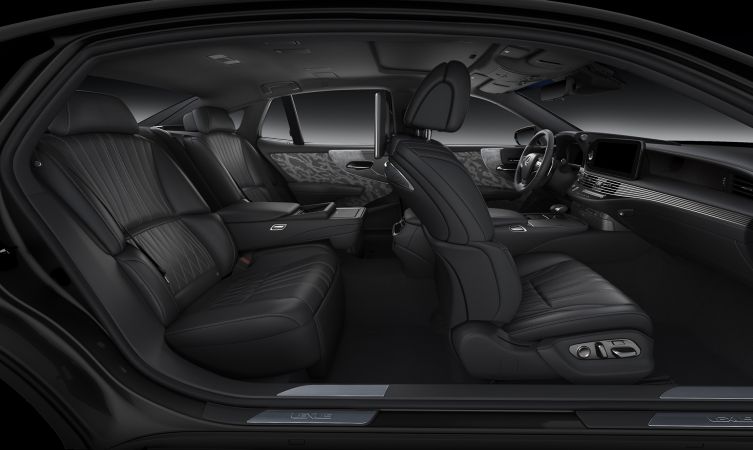
Guided by the theme Time in Design, the development team drew inspiration from the Japanese concept of beauty, the perception of which changes as time passes and the environment changes. Chief engineer Toshio Asahi explains: “We wanted to capture an ephemeral scene to express the design atmosphere, taking an exquisite aesthetic sense that is uniquely Japanese to a high level of artistic value. With this in mind, the design team chose a scene of moonlight shining on waves as the theme to coordinate the interior and exterior design.”
Introducing innovative new paint technology
In harmony with the Time in Design theme, the new 2021 Lexus LS represents our latest advance in innovative paint technologies. Lunar Silver is a paint finish that throws the curves and angles of the car’s bodywork into stark reliefs of contrasting brilliance and deep shadow, which creates impact and intrigue to the subtleties of the overall design.
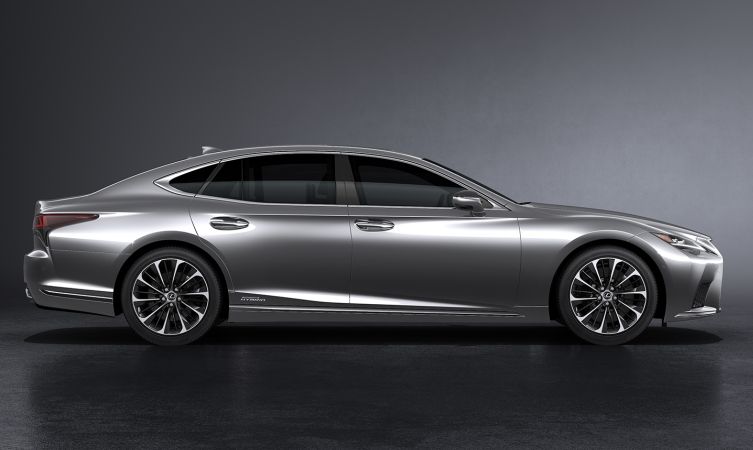
Lunar Silver changes its tonal quality according to both the viewing angle and time of day, with a different reflective quality under the midday sun compared to twilight. The effect is also heightened when the LS is in motion, where the passing scenery is reflected across its mirror-like surfaces.
The key to this effect is a new advance in sonic painting technology. Standard paintwork is usually between 13 and 14 microns thick, while our previous sonic shades have reduced this to around four microns. With Lunar Silver the technique has been taken to an even higher level so that the paint is compressed to a depth of just one to two microns. This means that the aluminium flakes that would normally be randomly suspended within the paint are brought into a dense, uniform alignment that accentuates their brilliance and reflectivity.
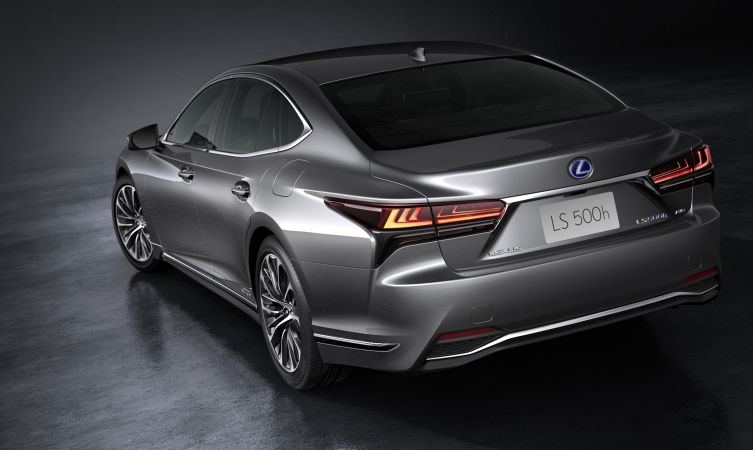
Of course, this ultra-thin film cannot be effective on its own. It takes great skill to apply and is highly sensitive to the qualities of the underlying base and primer layers, so Lexus has significantly refined their quality and smoothness, too. This called for close collaboration between the paint engineers and manufacturing team, making repeated, detailed improvements until the desired pure silver, mirror-like finish was achieved.
2021 Lexus LS: Time in Design influences new interior trims
The influence of Time in Design has also produced a new interior trim combination for the 2021 Lexus LS, available in conjunction with the Lunar Silver paintwork.
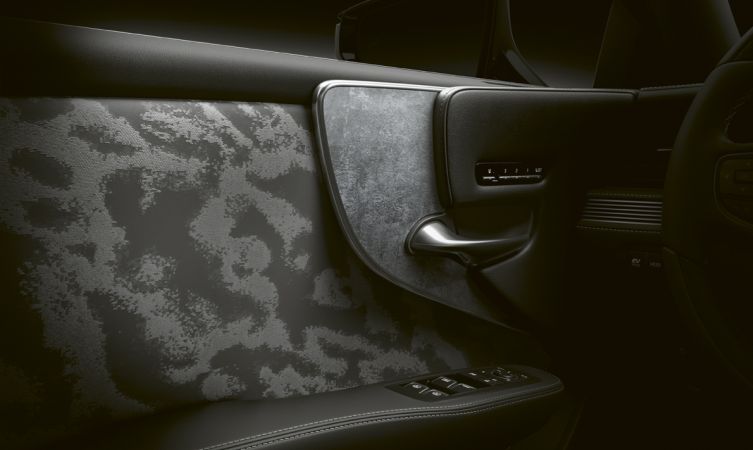
A new Nishijin and Haku door ornamentation follows on from the striking Kiriko cut glass and hand-pleated trims featured previously on the LS and is a similar reinterpretation of classical Japanese artistry.
Nishijin (see video above) evokes the shimmering path of light created by a full moon above the sea. It is created using the same historical technique once used to make woven material for Japanese noblemen: fine threads of metal foil are mounted on washi paper and cut into thin strips to make yarn. For the LS, the threads are woven into a jacquard pattern with a three-dimensional effect in tones of silver, grey and black.
This blends beautifully with a Haku (see video above) panel that curves around the door handle. The history of Haku – the Japanese word for ‘metal leaf’ – can be traced back 400 years to a highly skilled process in which a metal ingot is hammered into a foil that is just a few ten thousandths of a millimetre thick. This foil is then hand-applied to the panel’s surface to create a beautifully textured finish.
2021 Lexus LS – advanced safety technologies
The dramatic evolution of driver assistance technologies is making Lexus cars ever safer to drive, increasing the driver’s awareness of hazards and intervening when needed to help prevent a collision. The new 2021 Lexus LS saloon uses the latest, world-leading systems, supporting Chief Engineer Toshio Asahi’s desire to create a car that gives people “freedom to move around confidently.”
To improve the driver’s night-time vision, the new LS has adopted the BladeScanTM Adaptive High-Beam System (AHS) which Lexus first introduced on the RX SUV. This technology significantly increases the breadth and distance of forward illumination, so pedestrians, road signs and potential hazards can be seen earlier and easier than with conventional LED lighting. The BladeScanTM system directs light from the headlights’ LEDs onto a fast-rotating mirror and then through a lens, giving much finer illumination control.
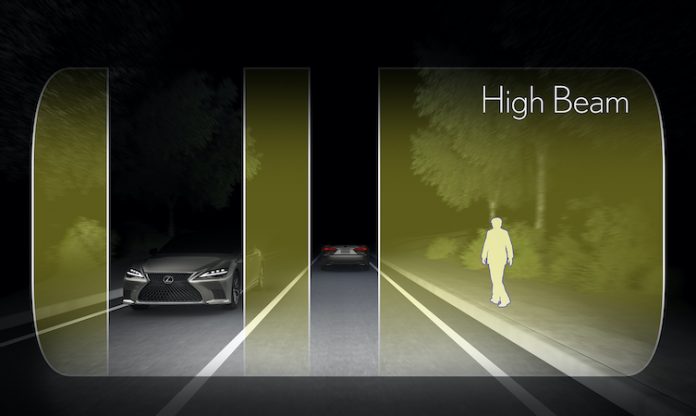
The driver’s view and awareness of their surroundings are further improved with a new digital rear-view mirror, which gives an unobstructed view of the road and following traffic using real-time images from the car’s rear-mounted camera. There is no intrusion in the driver’s sightline from headrests or other passengers, and the image is optimised for clarity in poor weather and night-time driving. Touch-activated controls make it easy to adjust brightness, image scaling and scale the view up or down, left or right.
The 360-degree Panoramic View Monitor is an excellent safeguard against collisions when driving at low speeds, as when passing another car on a narrow road, parking close to a kerb or making a turn. The driver can check the car’s position and clearance from any obstacle or other vehicle, checking an image of the car as viewed from above.
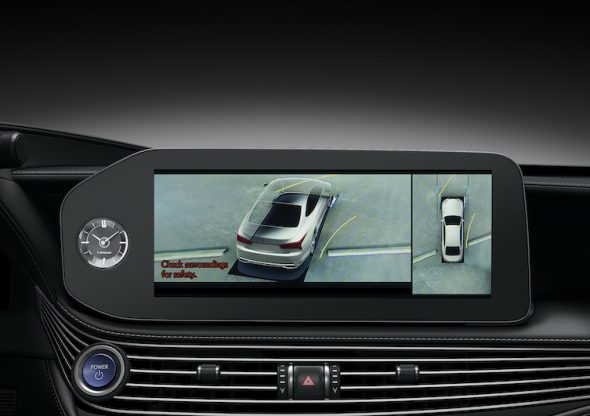
There is further intelligent protection with the LS’s Parking Support Brake. This can detect obstacles around the car and any vehicles and pedestrians approaching at the rear. If there’s a risk of impact, it will trigger control of the driving force and brakes.
The new Advanced Park system is designed for simple and smooth automated parking, but with a natural feel that makes the driver feel more at home using it. Lexus researched thousands of parking patterns and analysed the approximate distances, angles and speeds of entry to parking spaces. The results were incorporated into the system, together with updates based on real driver feedback gathered from numerous test drives. The result is prompt and secure parking at the press of a switch. The way the car manoeuvres itself may not seem the most efficient: this is because Lexus wants it to feel more like parking by a skilled driver, rather than parking by a machine.
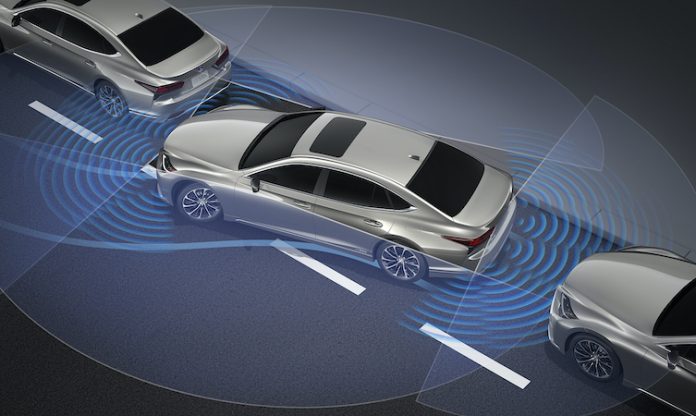
The system controls the steering, throttle, brakes and transmission shifts and works faster than rival systems. When the driver pulls up by a prospective parking spot, the Panoramic View Monitor makes a 360-degree scan of the surroundings. The system then calculates the right manoeuvre, keeping the car’s speed down if the space is tight. The driver can follow the progress via live images and graphics on the central display. The Advanced Park works with marked and unmarked parking spaces and it can store details of regularly used locations in its memory – a Lexus first and a first in the luxury car segment.
2021 Lexus LS: perfecting everyday performance
Customers expect the 2021 Lexus LS Hybrid to deliver supremely smooth performance whenever they get behind the wheel. Not just on long motorway journeys, but in everyday driving, too. To achieve this, Lexus has made improvements to the LS 500h’s Multi Stage Hybrid System, raising the bar yet again.
The aim was to deliver acceleration with a better sense of the car’s torque when the LS is being driven with modest throttle pressure, providing smoother and quieter acceleration without frequent gear shifts or sudden changes in engine revs. The solution was to increase the level of electric motor assistance by expanding the performance of the hybrid system’s high-voltage lithium-ion battery.
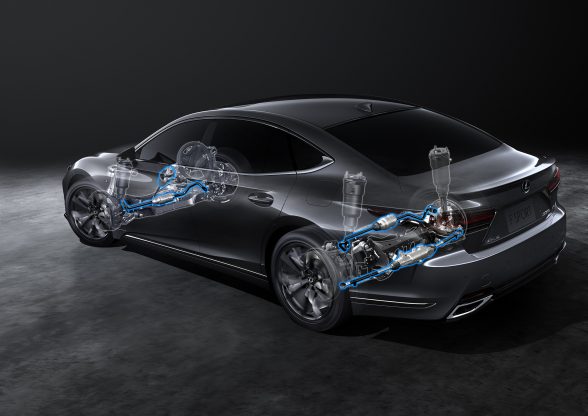
Lexus researched the many different acceleration scenarios experienced by millions of drivers around the world. Analysis of the big data created found that for about 90 per cent of their time at the wheel, drivers only use around 50 per cent of full throttle, usually generating no more than 0.3G. This led the LS team to prioritise more effective use of drive torque to gain the quality of lower-speed performance it sought – what it calls “leeway acceleration.”
The driver will notice this as a quick response even when the accelerator pedal isn’t pressed hard, for example when pulling away from stationary, reaccelerating in traffic and driving on winding roads. Power delivery is prompt and the car’s increase in speed more faithfully matches the rise in engine rpm.
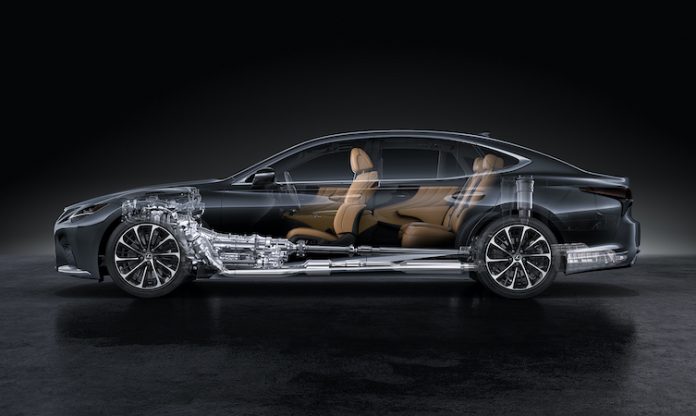
The high-voltage battery’s usable range has been expanded, which reduces the difference in drive force before and after shifting to give a smooth acceleration feel. This adds an extra 170Nm of torque when driving at around 12.5mph (20km/h) with about 40 per cent throttle. The increased contribution from the electric motor also means the 3.5-litre V6 hybrid petrol engine can operate at lower revs – reduced by about 500rpm when accelerating from 0-62mph with just 40 per cent pressure on the accelerator.
As a result, and with additional changes to upshift timing, there are no sudden changes in rpm under acceleration and performance is quieter and smoother while also better communicating the car’s “torqueful” quality. Urban performance, in particular, is more comfortable and the quieter running is noticeable, for example when the engine restarts after EV mode driving.
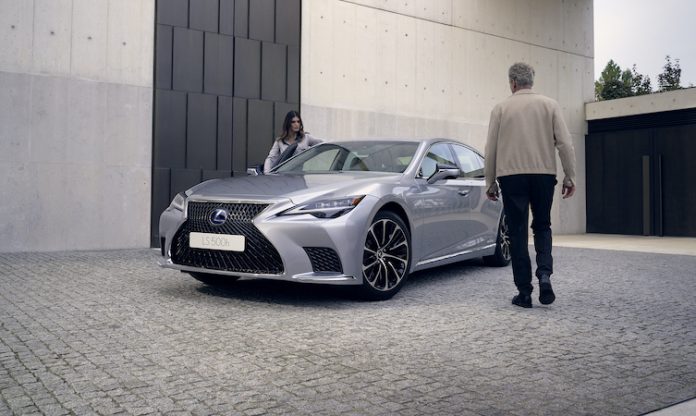
These changes have been accomplished while maintaining the Multi-Stage Hybrid System’s performance benchmarks: total system output remains at 354bhp/264 kW, with acceleration from 0-62mph in 5.4 seconds for the rear-wheel-drive LS 500h and 5.5 seconds for the all-wheel-drive model. There is also no impact on the high-voltage battery’s durability.
The driver’s perception of the engine performance has been fine-tuned with the adjustment of the Active Noise Control to deliver a quieter engine sound.
All information was correct at the time of publishing.
